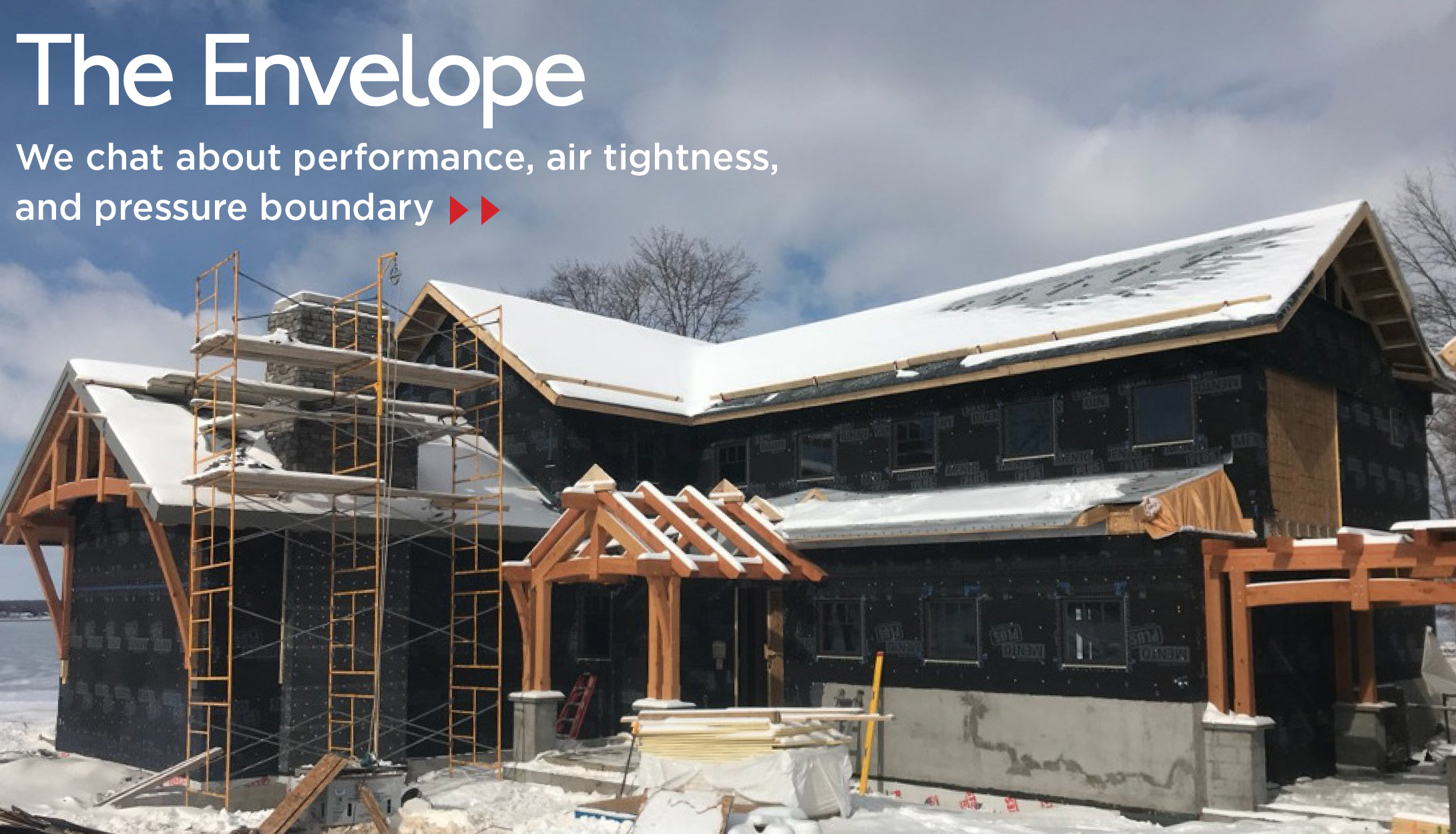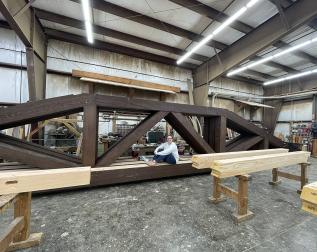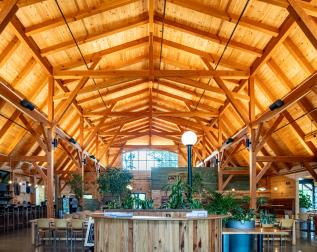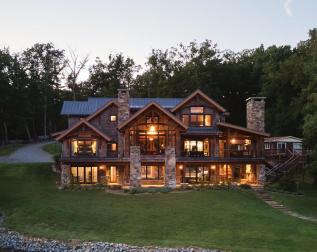Much of our design and construction planning focuses on reducing the energy our projects consume, not only to the benefit of those enjoying the home, but to the larger community and the planet. One of the best ways to influence this: special consideration, planning, and detailing of wall and roof systems (aka: the project’s envelope). I chatted with Ty Allen AIA, our design-build manager, who took us a bit deeper our current innovations and processes with our home enclosures:


Megan: Thanks for walking through this, Ty. I’m curious, what do you think are the key things to consider when you are designing the building envelope for a high-performance home?
Ty: Air leakage is one of the biggest areas of energy and efficiency loss. Think of it this way; you can have as much insulation you want, but if you leave the front door open, it doesn’t matter. Add up all of the thousands of potential points of air leakage, and it can quickly turn into a big energy and efficiency loss.
Generally, when we think about envelope design, one of the most fundamental things we want to do is define the pressure boundary. In other words, the line throughout the building in the wall-makeup where you’re creating airtightness. If there’s a break in the pressure boundary, say cold air leaking through the floor system into the living room, performance is lost.

Megan: Now I don’t feel as bad about repeatedly telling the kids, “Close the door!”. Pressure-boundary is still new to me, though. Can you explain it a bit more?
Ty: Sure. If you take a building section-drawing, with a red pen, you should be able to draw a continuous line from the footer around the foundation wall, up through the floor system, up the exterior walls, across the roof, down the next wall all the way to the footer again in a continuous line that defines the perimeter. We’re focused on where the building systems change—the foundation to the first floor, for example—and the interactions at those locations.

We ask ourselves: What does it mean to create airtightness through changes in systems? What would this type of connection require? We really have to look hard at how to maintain continuity. What’s getting taped to what? Do we need a membrane to cross from inside of a wall to the exterior of the wall for some reason? How are we going to integrate each system and keep the pressure boundary intact?
This is where airtight membranes, connected to something called “floppy bits” with high-performance tapes take a large role. Floppy bits are 12″–36″ wide strips of membrane material that we pre-install behind posts, or through tricky wall and roof intersections, which gives us something to connect our roof and/or wall membranes to as the building envelope is pieced together. In conjunction with this, we are currently using an exterior water-resistive barrier (house wrap) that is outperforming others we’ve tried in the past in airtightness and durability while still allowing vapor exchange if need be.

Megan: I know when talking enclosure we’ll ask folks to envision the timber frame as if it was a chair, then to cover the chair with a blanket. The structure is protected and sealed from the elements. Are there special considerations with timber frames enclosure versus standard stick framing?
Ty: Frequently there is the need to pocket exterior timbers into a wall or make other penetrations which disrupt that plane. The frame interacts with the exterior of the building at various points. In these cases, our craftsmen use the floppy bits. They’ve created a “timber boot” to tie the end of the timber into the pressure boundary. It becomes a bit like origami, really. Innovation and problem-solving like this is in our DNA.

Megan: I hear more about hybrid projects these days. What considerations apply to those hybrid projects?
Ty: On the majority of projects we create hybrids—a combination of timber framing with stick building. There are extra challenges in this combination; it’s a craft to making these structures airtight because of the different building systems used. Our team of experienced carpenters often envision and execute solutions from plans and for what they’re encountering on-site.


Megan: We have such a hybrid coming together at Allen’s Point, right?
Ty: Right. That project has a more conventional roof framing system so we are using an air barrier membrane at the ceiling plane, between the drywall and trusses, which is tied to the exterior water-resistant barrier all to keep the pressure boundary intact. It is a large and complex home, but we’re aiming for 1.0 air changes per hour at 50 pascals.

Megan: I know we’ve been talking airtightness, but what do you mean by air changes?
Ty: The amount of air that passively leaves the house and is replaced by outside air through air leakage points. In a code level house, three exchanges an hour is acceptable. For us, that’s too many.
![“Typically, we would do an initial blower door test when the building envelope is complete, before insulation and air-sealing. After the insulation is installed, and the obvious leaks in the envelope addressed, we would test again. Finally, we do the last check when the construction is finished [pictured above]. We are excited to see how our initial blower door test goes for the Allen’s Point project!”](https://newenergyworks.com/sites/default/files/inline-images/blower-door-test-new-energy-works-timberframers.jpg)
Megan: What’s the average number of air changes in our GC projects?
Ty: Over the years we’ve watched our blower door test numbers fall from above 2.0 air changes per hour at 50 pascals, to 1.0 air change per hour, then to .6 at the Olsen’s project which is Passive House level of airtightness. At a more recent project in Oregon we were at .58, and .46 at a Connecticut project. All of the wraps, tapes, and floppy bits mentioned above, plus the knowledge of how to use them, account for better performance. Our best results were .28 at our Net Zero Home in New York. All the testing has helped us understand the required detailing to allow us to hit airtightness goals. For each project, we identify what we need to do to impact the building performance of a specific house and study the associated costs. Decisions on how to proceed are made during the design process, approached based on budget, and homeowner goals.


Megan: I often hear our different teams exclaiming about new innovations, both from within our groups and from outside sources. What’s inspiring today? What’s next?
Ty: We’re beginning to look at the next iteration of our wall system. This would include things like employing less foam and possibly incorporating new types of insulation, such as wood fiber. We’re certainly also thinking about other ways to achieve high levels of airtightness, and increasing the overall thermal performance of our walls. We want to have airtight, but vapor permeable systems. So, looking at new materials that fit the bill is something that is ongoing.

Megan: I’m excited to see what the next system incorporates – and how it performs! Thanks, Ty.
As for the current Allen’s Point project? Interiors are the focus. These days we’re getting into final materials selections. This includes lighting, incorporating reclaimed wood, custom cabinetry, and even wall colors. But that’s a story for another day!














